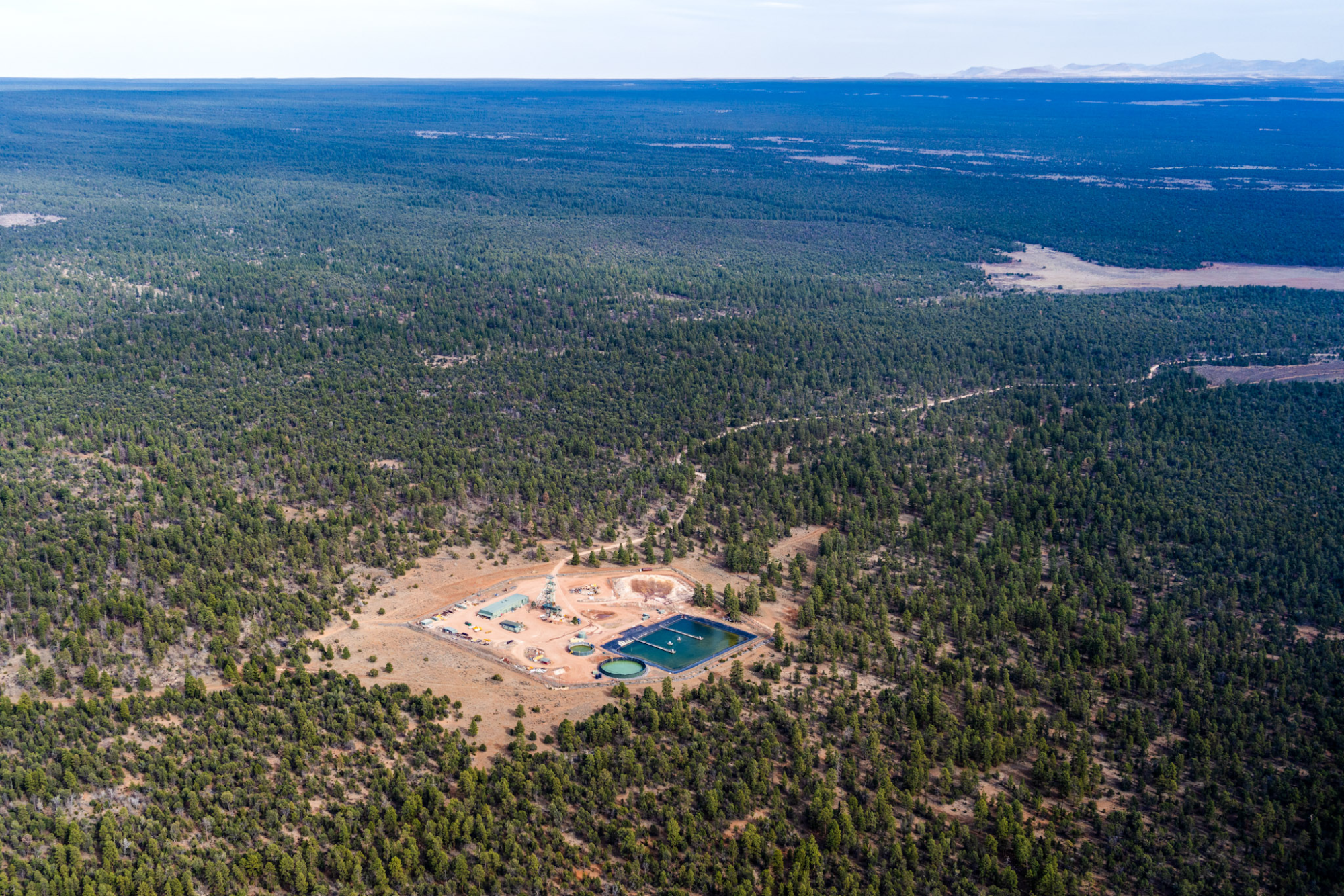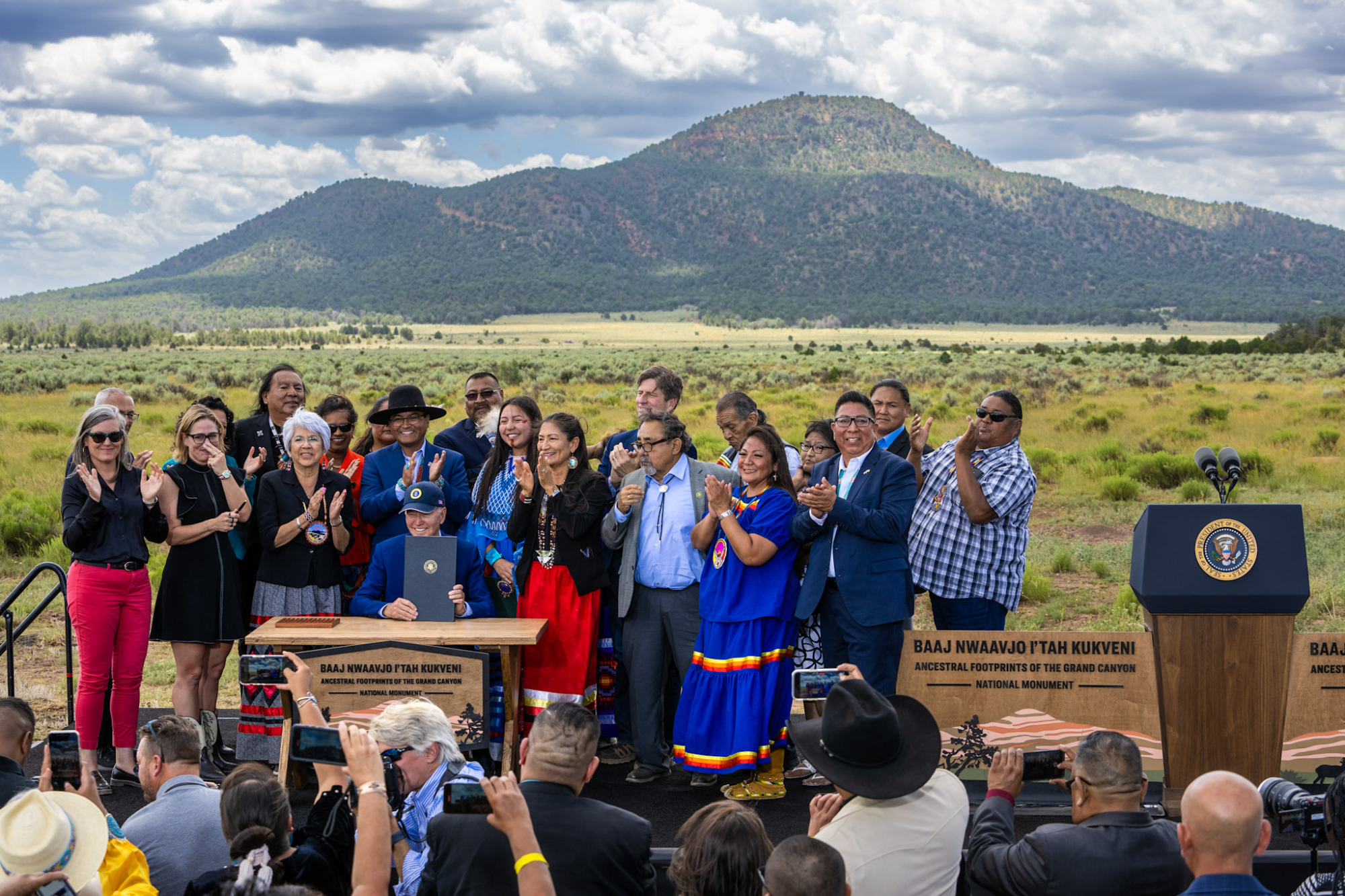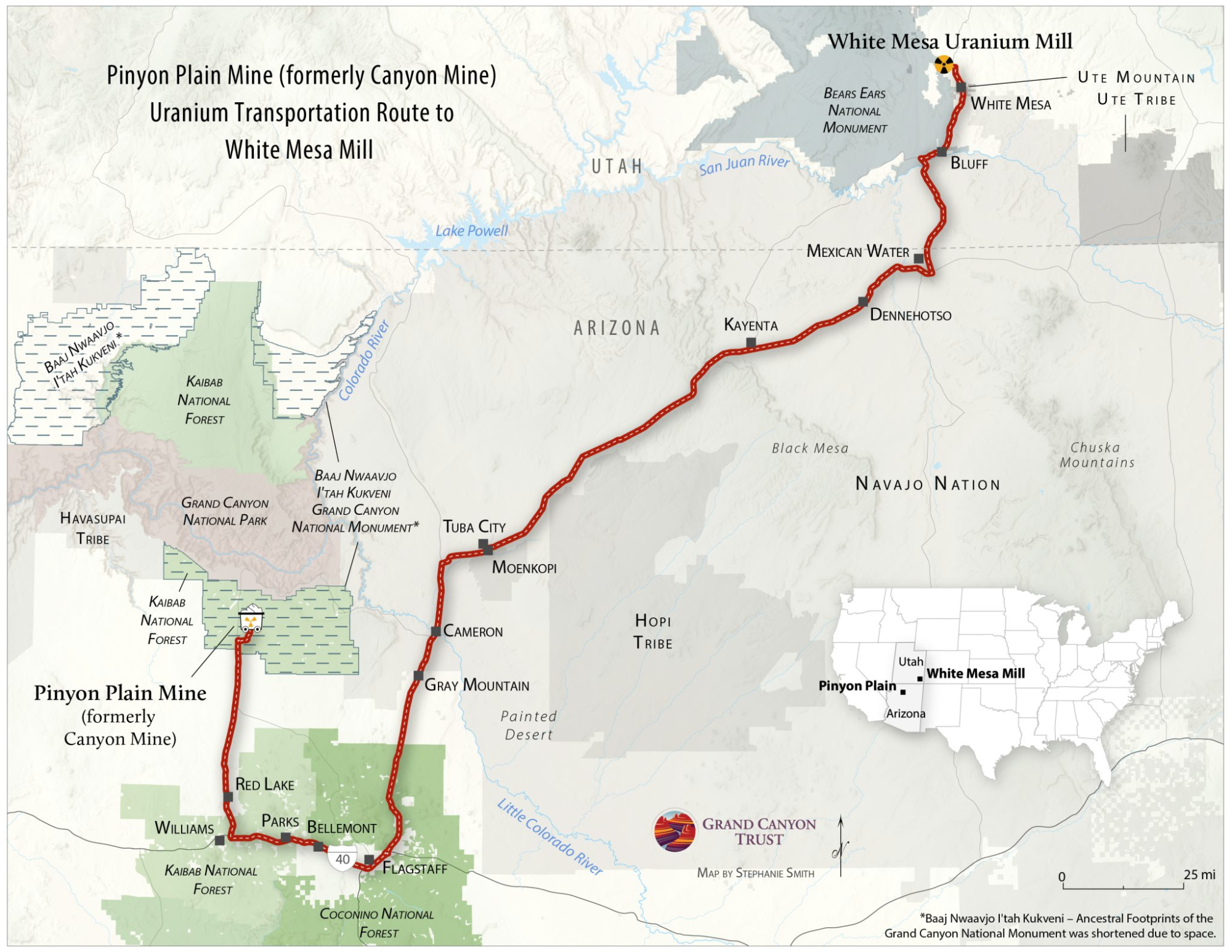
Tribal leaders are condemning the primary producer of uranium in the United States for transporting hazardous materials through their territories without their consent and without advance notice.
The Havasupai Tribe and the Navajo Nation were informed on Tuesday morning that Energy Fuels Resources Inc. had begun transporting uranium ore through Arizona. But the notice came not from the company but from the U.S. Forest Service, prompting tribal leaders to accuse the producer of going back on its word regarding shipments from the Pinyon Plain Mine near the Grand Canyon to a processing site in neighboring Utah.
“They snuck through the Navajo Nation and they made it onto the Utah side, outside of the reservation,” President Buu Nygren said in a news release. “To me, they operated covertly to travel the Navajo Nation illegally. It’s very disappointing that they did that, that they smuggled uranium across our Nation which is very inappropriate.”
Havasupai leaders also condemned the shipment of uranium ore, mined from a site near their reservation. In a statement, they said Energy Fuels didn’t even give the federal government advance notice.
“EFRI blatantly disregarded its good faith promise and notified the U.S. Forest Service hours after the haul trucks departed the mine site,” the Havasupai statement read. “EFRI has confirmed by its actions today that it cannot be trusted.”
The U.S. Forest Service confirmed that it wasn’t told in advance. According to the Kaibab National Forest, federal officials were told on the “morning of July 30” about the transport of uranium ore from Arizona to Utah.
“The Forest Service had requested advance notification; however, there were no requirements for the mine to do so,” the agency’s website about the Pinyon Plain Mine states.
Local officials further confirmed they were informed — by the federal government — only on Tuesday. The uranium ore was transported on highways entirely within Coconino County, including a busy interstate that goes through Flagstaff, the most populous city in the area.
“The Coconino County Manager’s Office and Emergency Management staff are monitoring the situation,” an online statement read.
Although Pinyon Plain Mine, formerly known as Canyon Uranium Mine, has been permitted since the 1980s, the current situation began earlier this year. According to the Kaibab National Forest, Energy Fuels Resources disclosed on January 8 that it had removed uranium ore from the mine.
“This is the first time that ore has been removed from the mine,” the Kaibab National Forest states.
“Energy Fuels cites the current high price of uranium as the reason for beginning ore production,” the Kaibab website adds.

Energy Fuels notified the Environmental Protection Agency late last year that it had begun operations at Pinyon Plain, located near Red Butte, a sacred place. Since then, Havasupai leaders said they have been “forced to witness the degradation of our aboriginal territory that encompasses the mine site.”
“Our tribe remains well versed with the wide array of health risks associated with radioactive contamination,” the Havasupai statement reads. “Our purpose of opposing uranium mining remains for the protection of our drinking water and the health and safety of our tribal members and tourists who visit our reservation.”
After learning about the shipment on Tuesday morning, Navajo President Nygren dispatched tribal police to try to stop the “illegal transportation” of uranium ore that went through highways on the reservation. A photo he shared on social media showed what he said was one of two trucks on Navajo lands — the truck had a “Radioactive” warning on it.
The tribe’s highest legal official called the action a violation of its sovereignty.
“Even though there is a state right of way for some of the path that the trucks will be taking across the Nation, that doesn’t mean that we don’t have any right to regulate that territory,” Navajo Nation Attorney General Ethel Branch said. “It’s still Navajo trust land. It’s still Navajo sovereign territory.”

The Pinyon Plain Mine is notable in that it is located entirely within the boundaries of the Baaj Nwaavjo I’tah Kukveni – Ancestral Footprints of the Grand Canyon National Monument. However, the designation made by President Joe Biden in August 2023 does not stop mining there.
“Existing mining claims – predating a 20-year mineral withdraw initiated in 2012 – will remain in place, and the two approved mining operations within the boundaries of the monument would be able to operate,” the White House said as it called the designation of Baaj Nwaavjo I’tah Kukveni a victory for the protection of sacred tribal sites.
Pinyon Plain is also less than 10 miles from the gates of Grand Canyon National Park, which draws millions of tourists not only to federally-managed lands but to the Havasupai Reservation. New uranium mining has been banned in and around the Grand Canyon but the federal courts have ruled that Energy Fuels can operate legally due to existing permits.

But tribes in Arizona aren’t the only ones affected by uranium development in and around Grand Canyon. The processing site used by Energy Fuels Resource is opposed by the Ute Mountain Ute Tribe, whose reservation community of White Mesa in Utah is only three miles from the uranium mill.
“The tribe has a strong interest in maintaining the long-term quality of land and natural resources and preventing short-term users like Energy Fuels Resource Inc. from polluting tribal lands, members, and resources and making aboriginal and tribal lands uninhabitable for future generations of tribal members,” a Ute Mountain Ute submission to the Utah Department of Environmental Quality a decade ago reads.
The White Mesa Uranium Mill, as the processing site is known, was originally licensed by the U.S. Nuclear Regulatory Commission (NRC) and has subsequently been licensed by the state of Utah under an Agreement State arrangement with the NRC.